Procure-to-pay Processes & Machine Learning

The procure-to-pay (P2P) cycle or process consists of a set of steps that must be taken in order for an organization to procure and pay for goods and services. Procurement is the process by which organizations purchase goods, supplies, equipment, or services from outside sources. The procurement function may also serve as an intermediary between two internal departments or divisions that have overlapping needs. In this blog post, we will discuss how AI / machine learning can be leveraged to automate certain procure-to-pay processes such that procure-to-pay teams can focus on core business goals. What is the procure-to-pay cycle or process? The procure-to-pay (P2P) cycle or process is defined as …
Building Machine Learning Models & Dev Challenges
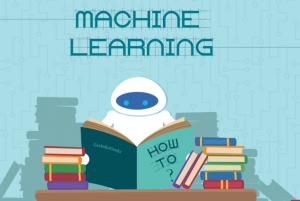
The machine learning models and AI implementation industry is booming. The demand for machine learning models has never been higher, but the challenges of machine learning development and deployment have also increased. In this post, we will discuss a few common machine learning development and deployment challenges. In future blogs, we will learn about solutions to overcome these challenges. This blog post will help you learn and understand some of the key challenges that you may face if you are planning to start machine learning practice in your organization. These challenges are also very much relevant if you have machine learning engineers and data scientists working across different offices/locations on …
Poisson Distribution Explained with Python Examples

Poisson distribution is a probability distribution that can be used to model the number of events in a fixed interval. It is often referred to as “random poisson process” or “poisson process”. The poisson distribution describes how many occurrences of an event occur within a given time frame, for example, how many customers visit your store or restaurant every hour. In this post, you will learn about the concepts of Poisson probability distribution with Python examples. As a data scientist, you must get a good understanding of the concepts of probability distributions including normal, binomial, Poisson etc. What is Poisson distribution? Poisson distribution is the discrete probability distribution which represents the …
Demand Forecasting & Machine Learning Techniques
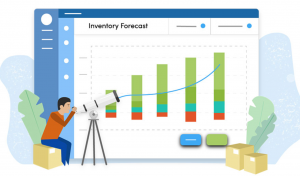
Machine learning is a technology that can be used for demand forecasting in order to make demand forecasts more accurate and reliable. In demand forecasting, machine learning techniques are used to forecast demand for a product or service. There are different types of machine learning/deep learning techniques used in demand forecastings such as neural networks, support vector machines, time series forecasting, and regression analysis. This blog post will introduce different machine learning & deep learning techniques for demand forecasting and give an overview of how they work. What is the demand forecasting process? The demand forecasting process is defined as the creation of demand forecasts, demand planning, and demand decision …
Agriculture Use Cases & Machine Learning Applications

Today agriculture is in a state of flux. Farmers are faced with the challenges of producing more food in face of a changing climate and population growth, while also adapting to evolving technologies that have changed agriculture forever. Machine learning has been applied to agriculture for many different use cases, from irrigation scheduling to pest management. In this post, we will explore agriculture use cases for machine learning & deep learning that can help farmers meet these challenges head-on. Different machine learning applications can be built around these agricultural use cases. It will be helpful for data scientists to get a high level idea around use cases and related machine …
BigQuery ML Concepts & Examples: Starter Guide
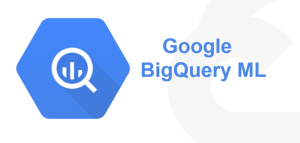
BigQuery ML is a machine learning platform that allows data scientists to build models using the power of their data. Unlike traditional machine learning, BigQuery ML does not require any programming skills, making it an easy way to get started with machine learning. Product managers and data scientists can both benefit from BigQuery ML by finding insights in their own datasets or collaborating with one another on new applications. The introduction of BigQuery Machine Learning Platform has enabled organizations to take advantage of the benefits of machine learning without needing deep expertise in either big-data or analytics technologies. This blog post will provide an overview of what you need to …
Quantum machine learning: Concepts and Examples
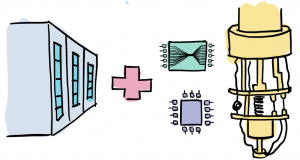
Machine learning has been a hot topic for many years now. There are different types of machine learning algorithms that data scientists and engineers use in their projects, depending on the type of problem they’re trying to solve. Recently, quantum machine learning has emerged as an alternative to classical machine learning techniques. The future of quantum computing holds tremendous possibilities promising exponential speedups over current technology. In this blog post, we’ll explore quantum machine learning (QML), its benefits over traditional machine learning methods, and the common quantum computing concepts it relies on. What are key concepts related to quantum computing? Quantum computing takes advantage of the computing power available through …
Relationship: Analytics & Data-Driven Decision Making

Data analytics is a topic that many data-driven organizations are becoming increasingly interested in. Data analytics often includes the process of analyzing data to find insights that can be used to make decisions. But what does this mean? How are different types of analytics related to data-driven decision-making? This blog post will explore how an organization’s use of data can help them make better, more informed decisions. Before getting into the details, lets quickly understand how business analytics is related data analytics. There are a number of facets that business analytics and data analytics have in common. In both the cases, the common steps include dealing with gathering data from …
Covid-19 Machine Learning Use Cases

The covid-19 virus is a type of coronavirus. It has been linked to severe acute respiratory syndrome (SARS). The covid-19 virus can be contracted through contact with saliva or mucous from an infected person. Symptoms include fever, cough, sore throat, headache, muscle aches, and fatigue. There are several problems related to the Covid-19 pandemic which can be solved using machine learning/data science techniques. In this blog post, we will look into some of these Covid-19 use cases which can be solved using machine learning classification and clustering techniques. What are Covid-19 data sets publicly available? One of the datasets available for studying Covid-19 is GISAID data (https://www.gisaid.org/) that represents million …
Federated Analytics & Learning Explained with Examples

Federated learning is proposed as an alternative to centralized machine learning since its client-server structure provides better privacy protection and scalability in real-world applications. It is experiencing a fast boom with the wave of distributed machine learning and ever-increasing privacy concerns. With the increased computing and communicating capabilities of edge and IoT devices, applying federated learning on heterogeneous devices to train machine learning models is becoming a trend. The federated analytics approach enables extracting insights from data residing on different systems without requiring the data to be brought to the central location. By leveraging these different data sources, federated analytics can provide powerful insights in relation to different areas such …
Graph Neural Networks Explained with Examples
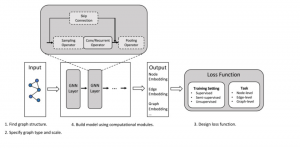
Graph neural networks (GNNs) are a relatively new area in the field of deep learning. They arose from graph theory and machine learning, where the graph is a mathematical structure that models pairwise relations between objects. Graph Neural Networks are able to learn graph structures for different data sets, which means they can generalize well to new datasets – this makes them an ideal choice for many real-world problems like social network analysis or financial risk prediction. This post will cover some of the key concepts behind graph neural networks with the help of multiple examples. What are graph neural networks (GNNs)? Graphs are data structures which are used to …
Drug Discovery & Deep Learning: A Starter Guide
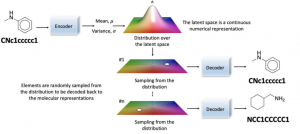
The drug discovery process is tedious, time-consuming, and expensive. A drug company has to identify the compounds that are most likely to be successful in drug development. The drug discovery process can take up to 15 years with an average cost of $1 billion for each drug candidate that passes clinical trials. With AI and deep learning models becoming more popular in recent years, scientists have been looking at ways to use these tools in the drug discovery process. This article will explore how deep learning generative models (GANs) could be used as a starting point for data scientists to get started drug discovery AI projects! What is the drug …
Supplier risk management & machine learning techniques
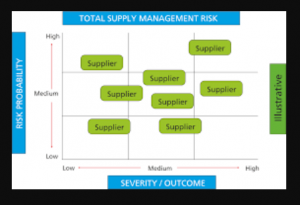
Supplier risk management (SRM) is a serious issue for procurement professionals. Suppliers can be unreliable, have poor quality products, or fail to meet specifications. In this blog post we will discuss AI / machine learning algorithms / techniques that you can use to manage supplier risk and make your procurement process more efficient. What is supplier risk management? Supplier Risk Management (SRM) also known as Supplier Risk Optimization (SRO), refers to policies and technology that enables organizations to manage risks related with suppliers. This can be done by analyzing data about past purchases from the supplier, predicting future risks related with purchases from this particular company. It’s crucial for procurement …
Key Deep Learning Techniques for Disease Diagnosis

The disease diagnosis process has been the same for decades- a physician would analyze symptoms, perform lab tests, and refer to medical diagnostic guidelines. However, recent advances in AI/machine learning / deep learning have made it possible for computers to diagnose or detect diseases with human accuracy. This blog post will introduce some machine learning / deep learning techniques that can be used by data scientists for training models related to disease diagnosis. What are different types of diseases that can be diagnosed using AI-based techniques? The following is a list of different types of diseases that can be diagnosed using machine learning or deep learning-based techniques: Cancer prognosis and …
Key Architectural Components of a Data Lake
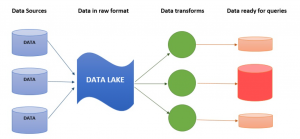
Data lakes are data storage systems that allow data to be stored, managed and accessed in a way that is cost-effective and scalable. They can provide a significant competitive advantage for any organization by enabling data-driven decision-making, but they also come with challenges in architecture design. In this blog post, we will explore the different components of data lakes, including the data lake architecture. Before getting to learn about data lake architectural component, lets quickly recall what is a data lake. What is a data lake? A data lake is a data storage system that allows data to be stored, managed, and accessed in a way that is cost-effective and …
14 Python Automl Frameworks Data Scientists Can Use
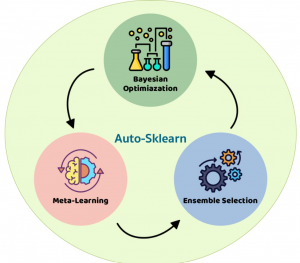
In this post, you will learn about Automated Machine Learning (AutoML) frameworks for Python that can use to train machine learning models. For data scientists, especially beginners, who are unfamiliar with Automl, it is a tool designed to make the process of generating machine learning models in an automated manner, user-friendly, and less time-consuming. The goal of Automl is not just about making it easier for machine learning (ML) developers but also democratizing access to model development. What is AutoML? AutoML refers to automating some or all steps of building machine learning models, including selection and configuration of training data, tuning the performance metric(s), selecting/constructing features, training multiple models, evaluating …
I found it very helpful. However the differences are not too understandable for me